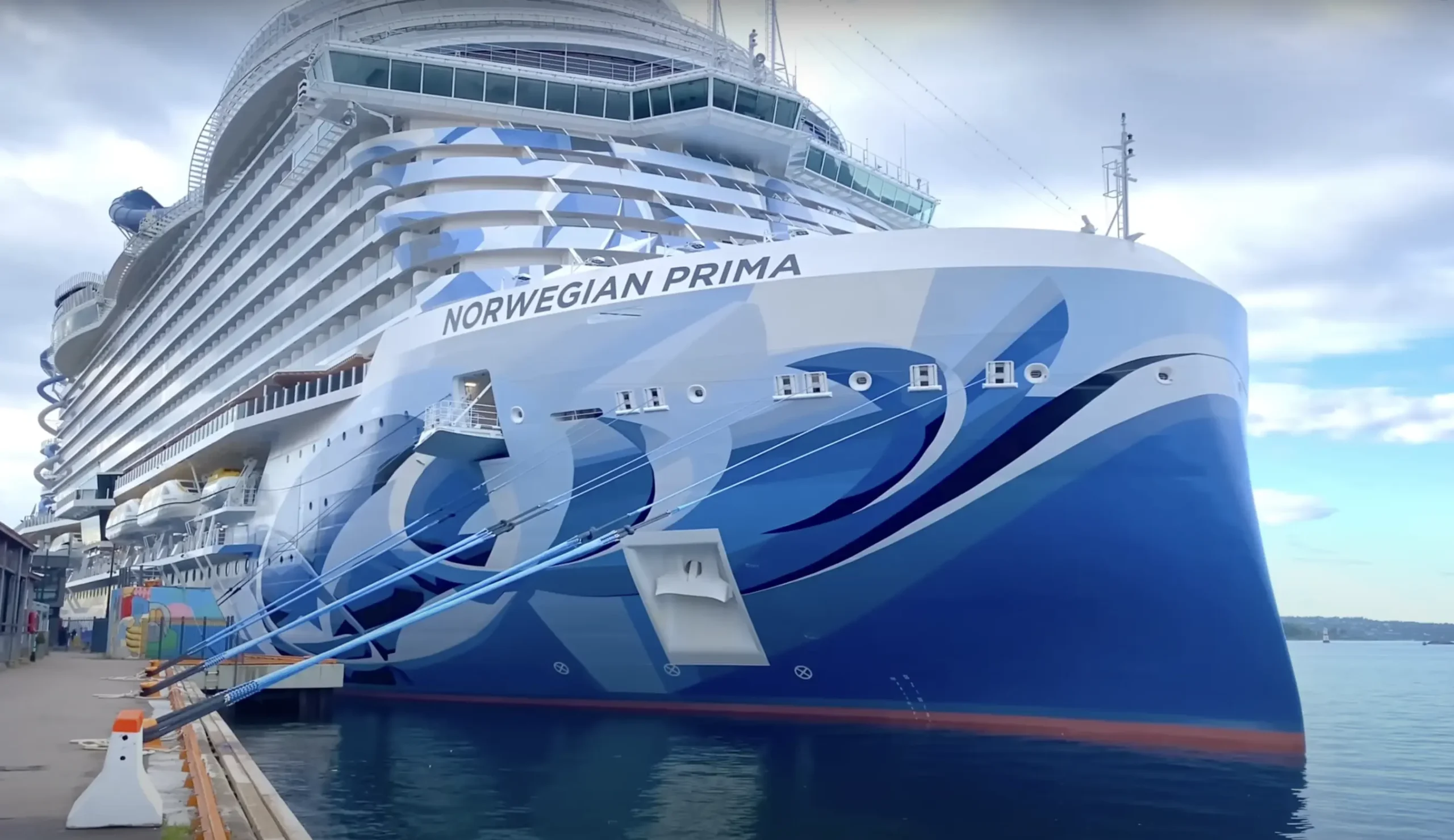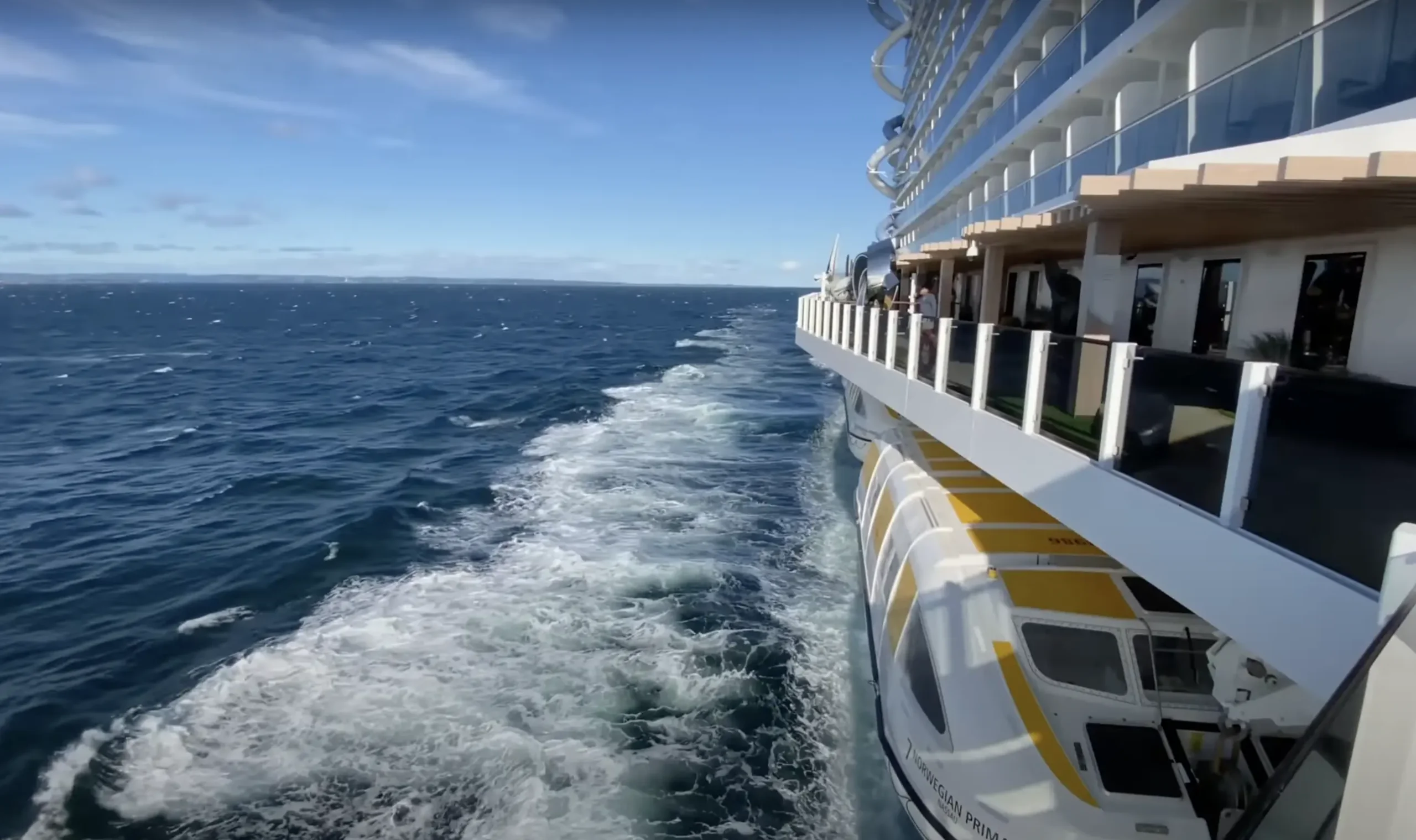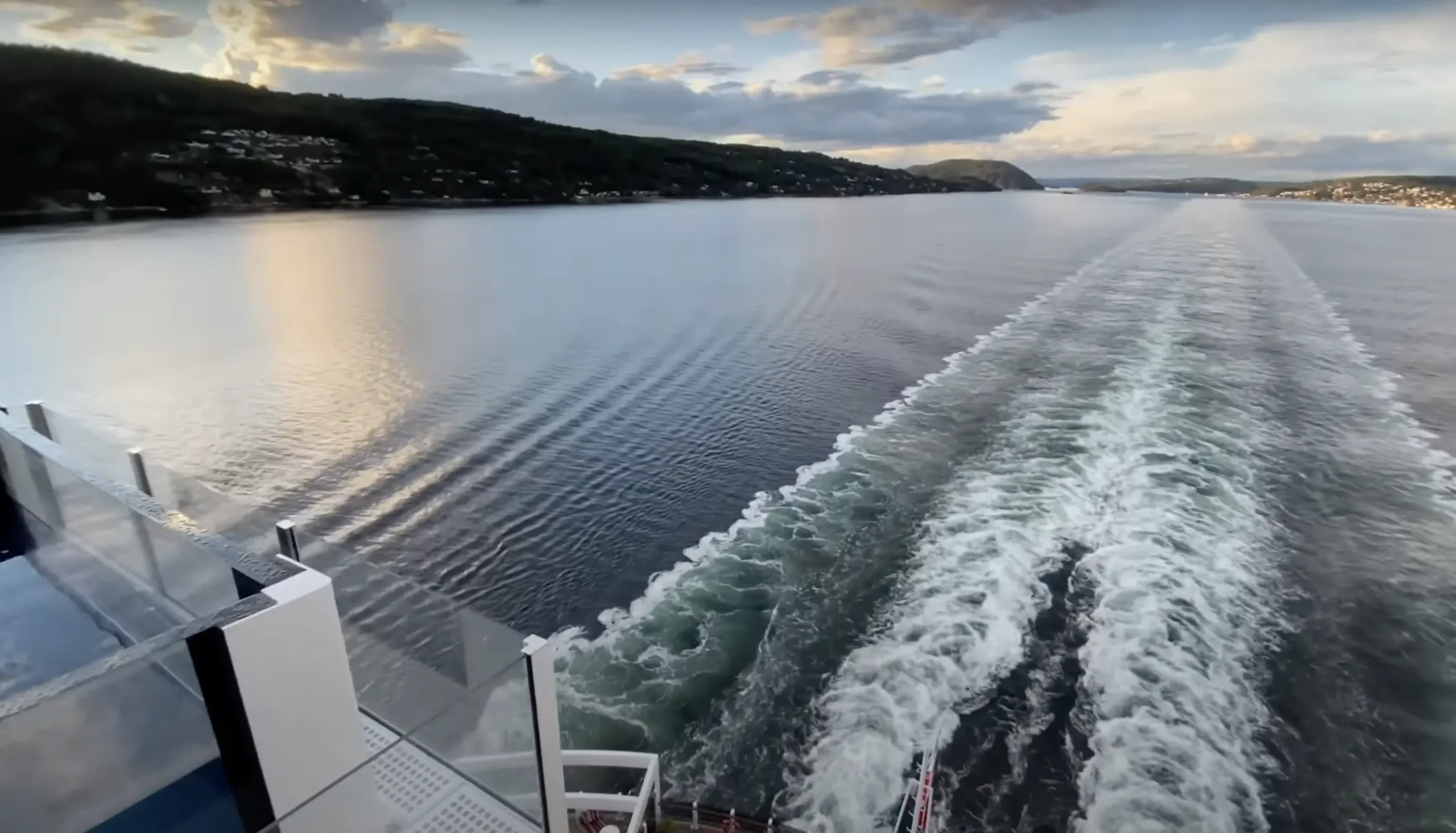If you’re like me who overthink about whatever they see or wherever they are, then you must have been concerned about how do cruise ships float and not tip over.
While coming back from my last cruise, I promised myself to solve this mystery and here I am ready to share all my findings with you. You will be amazed to know that cruising is one of the safest travel on this earth. Yes, it is.
I have done some research work and talked to a few cruise engineers to base my hypothesis on solid grounds. So, what did I conclude? Actually, it’s all about science, design, and smart building.

Yes, these massive ships stay upright and safe for everyone on board due to some cool tricks. There are a lot of amazing facts that I found out during my research journey.
Now, I am ready to share what I learned. So, in this blog, we’ll look at how these big ships stay on top of the water and why they don’t tip over.
Let’s get a little deeper into the amazing world of cruise ships together and discover how they do it!
How Does A Cruise Ship Float?
A ship floats because of the buoyant force which is a crucial factor that counters the weight of the ship. It also allows it to remain floating on the water. Let’s discuss all the counting factors that play this phenomenon.

1- Bulkheads: Understand How Ships Stay Upright
Bulkheads are essential to ensure a cruise ship’s stability. Compartmentalizing the ship into separate sections not only contributes to the structural integrity but also keeps the cruise ship upright.
This division helps manage the ship’s stability effectively and ensures that it can withstand various sea conditions.
2- Watertight Compartments: The Key To Buoyancy And Stability
Watertight Compartments serve as the foundation for a ship’s buoyancy and stability. The principle here is straightforward: a ship stays upright because the weight of the water it displaces is less than the total weight of the ship which makes it denser than water.
These compartments ensure that even if water breaches one section, the entire vessel doesn’t become compromised.
3- Sounding Tubes: How They Maintain The Center Of Buoyancy
Sounding Tubes are critical in maintaining the ship’s center of buoyancy. They allow the crew to monitor and manage the water levels within the ship. It ultimately ensures that the center of buoyancy moves appropriately to keep the ship balanced and prevent it from tipping.
4- Trim and List: Ship Stability Mechanics
The concepts of Trim and List are central to understanding the ship stability mechanics. Trim refers to the longitudinal tilt of the ship, while list is the lateral tilt.
If you want to keep the vessel upright, managing these aspects is crucial. It ensures that cruise ships stay balanced and can return to an upright position after being disturbed by wave action.

5- Free Surface Effect: Cruise Ship’s Center Of Buoyancy
The Free Surface Effect poses a challenge to cruise ship stability, as it involves the movement of liquid within the ship. This affects the ship’s center of gravity.
Strategies to mitigate this effect include compartmentalization and the use of anti-roll tanks to reduce the impact on the ship’s stability.
6- Metacentric Height (GM): The Center Of Gravity In Cruise Ship Stability
Metacentric Height (GM) is a key parameter that ensures the ship’s ability to resist tipping. It represents the distance between the center of gravity and the metacenter, where a higher GM indicates greater stability.
Hence helps to keep the ship from tipping over in rough seas.
7- Ballast Tanks: Help Cruise Ships Float And Stay Upright
Ballast Tanks are ingeniously used to help cruise float and stay upright. The ship can alter its center of gravity by adjusting the amount of water in these tanks. This creates an upward force that counteracts the downward force of the ship’s weight and effectively keeps the ship stable.
8- Gross Tonnage (GT): Keeps Cruise Ship Stable
While cruising on the Icon of the Sea, the largest ship of the Royal Caribbean, I kept thinking about how these giants keep floating. And that’s when I found out about Gross Tonnage (GT). It’s a measure that shows the overall internal space or volume of a ship.
Gross Tonnage affects the distribution of mass and volume of the large ships for optimal stability. So, the reason why these large ships move with stability is basically their internal space and not their overall weight.
9- Dynamic Stability: Prevents The Ship From Tipping
Dynamic stability is the ability of the ship that make it stable and prevent it from tipping under external forces. This concept is crucial to ensure that cruise ships can safely navigate through different sea conditions.
10- Stability Criteria And Regulations
Adherence to Stability Criteria and Regulations set forth by the cruise industry ensures that cruise ships are designed and operated to meet stringent safety and stability standards.
These criteria are vital to prevent accidents and ensure the passengers’ crew’s safety.
What Causes Cruise Ships To Sink?

It’s not just one but many factors that cause a ship to sink. Most of the time, it’s the water that gets inside the ship and makes it less buoyant. This happens if the ship hits something big like an iceberg or gets a massive tear in its hull.
Do you remember the legend Titanic? That’s what happened with this historical giant of the sea. Titanic, as compared to modern cruise ships, wasn’t supported by various factors we discussed earlier in this blog. So, simply by hitting an iceberg, the water rushed in, and the Titanic went down within hours.
Unlike Titanic, modern ships are designed super smartly to avoid these problems. They have special sections and alarms to keep water out and prevent ships from sinking.
So, even though there might be some risks today’s cruise ships are much safer because of advanced engineering and strict safety rules.
How Likely A Cruise Ship Can Tip?
Now, how often do you think a cruise ship might tip over? I know it sounds scary, but actually, it’s very rare.
Today’s engineers design ships very carefully and plan the routes even more meticulously to avoid any mishap in the seas. So, it’s very unlikely for a cruise ship to sink. Experts say that the technology and design of these ships keep them stable, even in rough water.
After the Titanic, in the last 100 years, fewer than 25 cruise ships have tipped in the ocean.
So, when you’re cruising, you’re on one of the safest ways to travel. The chance that a cruise ship would tip is so low that it’s not something I worry about when planning my next cruise adventure.
How Much Of A Cruise Ship Is Underwater?

It’s all about the ship’s draft. The draft is the part of the ship below the waterline – basically, the bottom of the ship that you can’t see when it’s floating.
A major portion of the ship (depending upon its size) is submerged to make sure that it’s stable and buoyant. This balance keeps the ship steady and helps it glide smoothly across the water.
So, when you’re looking out at the sea from one side of the ship, remember, there’s a whole underwater section keeping you afloat.
Do Cruise Ships Have Flat Bottoms?
Well, not all cruises have flat bottoms. But surely, this shape can be beneficial in certain conditions and provide a larger surface area for stability. However, many cruise ships have a variety of hull shapes. These huls are designed to balance efficiently through the water. It proves that there’s a lot of science behind that smooth sail.
Let me make it more clear to you. To do so, we will have a look at the chemistry of hull design. There is a phenomenon known as Archimedes’ principle, which will help you understand all this.
According to this principle, the buoyant force acting on a submerged object is the same as the fluid’s weight that the object displaces. So, cruise ships are designed for optimal stability and buoyancy.
What Is The Most Stable Part Of A Cruise Ship?
As far as I explored, it turns out that stability depends upon the design of the ship, especially the water plane area. This is the heaviest and widest part of the ship that’s usually found at the bottom or near the center.
This area is very important to keep the ship balanced, especially in rough seas. And if you have seasickness, it’s better to stay in the lower and central parts of the ship. Because these areas tend to feel less movement.
So, next time when you’re aboard, find a spot closer to the water plane area to make your cruise even more enjoyable.
Are Large Cruise Ships More Stable?
Yes, that’s true! When it comes to stability, the size of a large cruise ship does play a role. That’s because the world’s largest cruise ships, or giant cruise vessels, are designed in such a way that they stay stable. Actually, their massive structure and cruise ship stabilizers help them stay more stable in rough waters.
When Was the Last Time a Cruise Ship Tipped Over?
The last instance when a cruise ship tipped over was on 13 Jan 2012. Plus, in the previous ten decades, just 22 ships have been tipped so far.
This number shows the importance of the advanced systems onboard. For example, the ability to pump water from one side to another. This technology is key in maintaining the balance of the ship and prevents it from tipping.
So, there are just a few incidents in the past where a ship actually tipped. That’s why it’s evident that such matters are exceptionally rare. Why? Due to the cruise industry’s stringent safety measures and design innovations.
How Shallow Can Cruise Ships Go?
The depth a cruise ship can travel in water depends on its density. Ships are designed to be less dense than water which allows them to float. The ship’s draft, which is the portion of the cruise ship underwater, must be considered along with water density to avoid grounding.
In short, the ability of the ship to navigate shallow areas is limited by these factors which makes sure that it remains afloat without touching the sea bottom in less dense water environments.
Bottom Line
So far in this blog, I’ve uncovered how these floating giants stay upright and navigate the seas. Cruise ships are designed with safety and stability in mind.
The blend of technology and design ensures that these vessels can face the vast oceans with confidence. This peek into their workings not only satisfies curiosity but also reassures us about the safety and ingenuity behind cruise travel.
FAQs
Can a storm tip a cruise ship?
Cruise ships are designed to withstand storms thanks to advanced engineering and the rigorous safety standards of cruise lines, making tipping highly unlikely.
Can a cruise ship capsize in rough seas?
Modern cruise ships, like the Wonder of the Seas, are built to stay upright in rough seas, significantly reducing the risk of capsizing.
Could an iceberg sink a modern cruise ship?
The density of modern ships and their advanced navigation systems make it highly unlikely for an iceberg to sink a ship like today’s cruise vessels.
Can a whale tip over a cruise ship?
Considering the weight of the cargo and the massive size of cruise ships, a whale cannot tip over a cruise ship as the ship moves through the water.
Do cruise ships stop in the middle of the ocean?
Cruise ships may pause in the middle of the ocean if the volume of water or displaced water is equal to the weight of the ship, creating an opposing upward force, but they usually keep moving to their destination.
I am Zoe Grace, a passionate enthusiast of cruise ships. With a decade of firsthand experience in the cruising industry, I have developed a deep understanding of the intricacies and wonders that these majestic vessels hold.
Now, I am excited to embark on a new journey as an author, sharing my knowledge and insights with readers who share my fascination for the world of cruising.
Join me as we explore the captivating world of cruise ships together.
